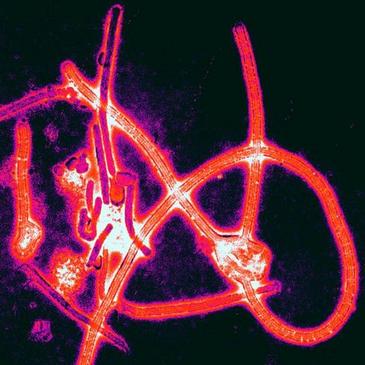Research co-led by Dr Javier Rojo’s group at the Instituto de Investigaciones Químicas (IIQ), a joint centre of the Spanish National Research Council (CSIC) and the University of Seville, has developed a methodology to synthesise glycodendrinanoparticles using the protein structure of a harmless bacterial virus, Bacteriophage Qb, modified on its surface with the same sugars that viruses such as Ebola and HIV also have on their outer envelope. These particles, when recognised by the receptors of these infectious agents, prevent the development of the infection. The research has been the result of collaboration with the group of Professor Ben Davis of the University of Oxford (UK) and Dr. Rafael Delgado of the Hospital 12 de Octubre in Madrid in the framework of the CARMUSYS project, a European Network of the 7th Framework Programme of the European Union coordinated by Javier Rojo.
The study, published in the journal Nature Communications, has succeeded in conjugating 180 copies of a glycodendron with nine mannose units in a controlled manner on the surface of this nanoparticle. The result is a glycodendrinanoparticle with 1,620 copies of mannose on its surface. This result highlights the potential of the methodology developed in Dr Rojo’s laboratory at the IIQ to prepare glycodendrons of sugars and to be able to conjugate them with any type of suitably functionalised structure, in this particular case, the Qb viral nanoparticle.
According to IIQ researcher Javier Rojo, ‘this is the particle with the highest number of copies of the mannose sugar described to date, whose structure and chemical composition are perfectly defined’.
The type of sugar, the number of sugar units and their spatial arrangement on the surface of pathogens are key elements in their infective activity. These characteristics will allow them to be recognised by their specific receptors on target cells to give rise to infectious processes.
The glycodendrinanoparticle developed in this research is able to interact effectively with a receptor involved in infections caused by viruses such as HIV, Ebola and SARS (severe acute respiratory syndrome), among other pathogens. Rojo explains: ‘In a cellular infection model, we have shown that our molecule is able to inhibit the infection caused by an artificial model of Ebola virus.




